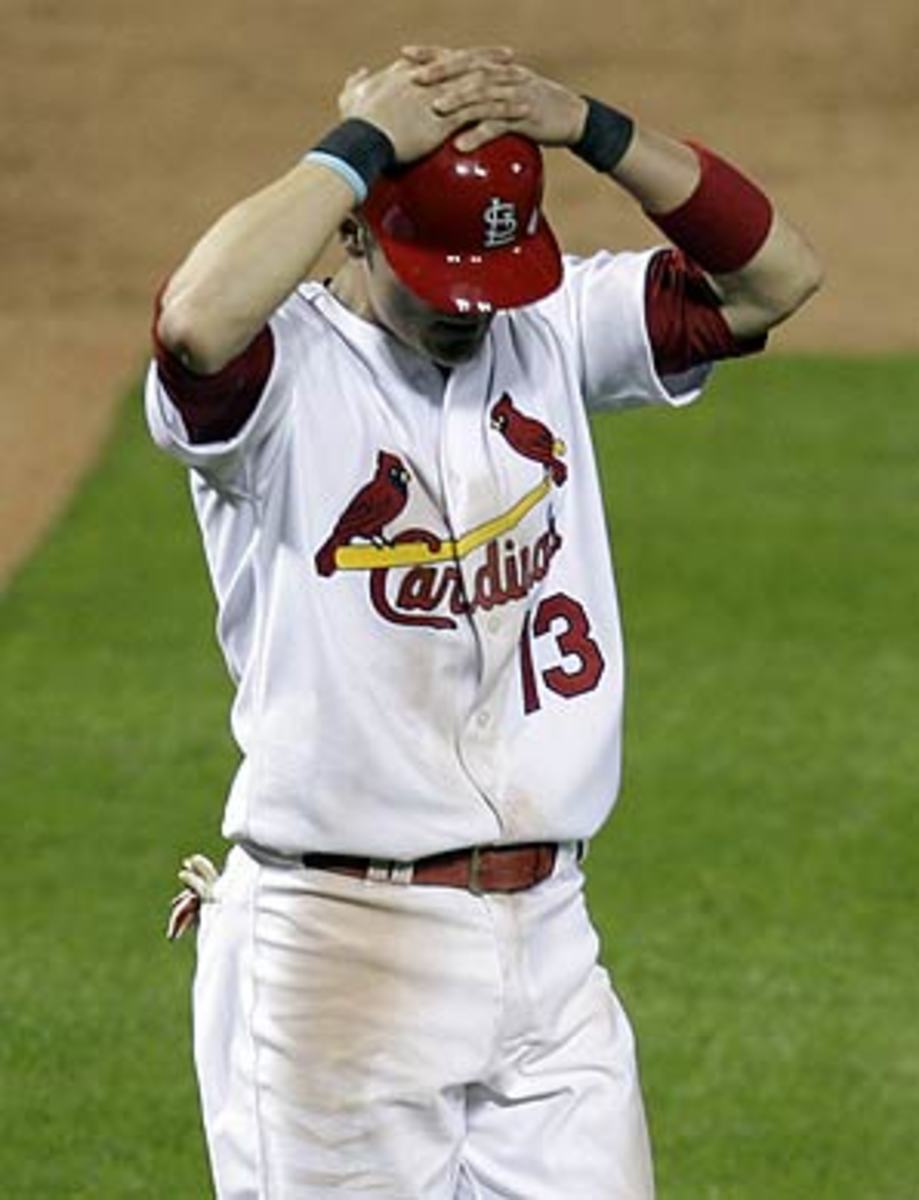
When it comes to the national pastime, expect the unexpected
The next time you're tempted to skip a ball game because you're just sure you know what's going to happen, think back to this past Saturday. It will cure your hubris.
In Atlanta, Rockies ace Ubaldo Jimenez rode his 100-mph fastball to the first no-hitter in team history, while in St. Louis the Cardinals and Mets played a full 20 innings, the first 18 of them scoreless. Take them together, and it will tell you a lot about how preposterous a day it was that Mets fans may even have had the better of it than Rockies fan.
Take a measure of relative scarcity involved here. Since the Mets' inaugural season in 1962, there have been a bit more than 190,000 games played, during which there have been 129 no-hitters thrown. Given this rate of one no-hitter per 1,500 games played, one would expect that the Mets would have five or so to their credit. As is, from Tom Seaver to Dwight Gooden to Johan Santana their pitchers have managed none, a feat which has sent untold tens of thousands of young fans to muttering about the dreaded 1971 trade of Nolan Ryan for Jim Fregosi, who wasn't even any good anyway.
Meanwhile, since the Rockies entered the majors in 1992 there have been about 84,000 games played, during which there have been 36 no-hitters. This is a rate of one per 2,300 games. Since the team has played just more than 2,700 regular season games, their no-hitter came right on schedule. From the perspective of a Mets fan, it seems almost unfair to watch these newcomers strut. "What is a Rockie anyway?" sneers Vinny from Bayside. "And does it count as a no-hitter if you give up six walks?" (Yes it does, and Jimenez has nothing on Blue Moon Odom, who once walked nine while pitching the first five innings of one. "Effectively wild," they call it.)
On its face, this says something about the fate of ball clubs, how one can grow into its history while another is mired in its own lack of it and how unkind fate can be to cursed teams. But our bitter Mets fan is overlooking the real significance here. Any expansion team can enjoy the supposed glory of watching a brilliant young ace like Jimenez throw a baseball as hard as it can be thrown while doing so with the motion of a heavy slider, utterly humbling hitters as good as Chipper Jones and Brian McCann and exulting in the powers that could well carry his team to their second pennant in four years. It takes an older expansion team such as the Mets to create the far rarer spectacle of a game where five different pitchers end up penciled into the cleanup spot of one team's batting order.
One runs out of things to say about the already legendary Mets-Cardinals fracas. It was a game in which Mets closer Francisco Rodriguez threw a full game's worth of pitches just in warm-ups. Two full NBA playoff games and three mixed martial arts world title fights started and ended while it was being played. Before it ended, Cardinals starter Kyle Lohse had played three innings in the outfield. It took so long to play that a neighbor of mine watched much of the game in Atlanta, boarded a flight to Chicago's O'Hare Airport, landed, drove home to the South Side and caught the end with time to spare. It gave us the box score lines "J. Mather, ph-cf-3b-p" and "J. Mather (L, 0-1)," which will, no matter what else he does the rest of his career, be a significant part of admirable Redbirds reserve Joe Mather's legacy.
Aside from its own significant merits, though, the game was notable for continuing a Mets tradition of impossible games. In 1974, the Mets and Cardinals played a 25-inning game, the longest uninterrupted game to go to a decision in major league history, and you may know that in 1968, a 24-inning set between the Mets and Astros was the longest shutout ever seen. There was a third game in this class, though, which you may not know about, and it was likely the most impressive. Not only did a May 1964 game against the Giants go a full 23 innings, and not only was it was the second game of a doubleheader, but it saw two different pitchers throw the equivalent of complete games in relief. (Gaylord Perry picked up the win with 10 innings out of the bullpen for San Francisco, and no one can say he didn't earn it.)
Here we come to the point. While those 129 no-hitters were being thrown in the years that have passed since the Mets played their first game, just 30 games went 20 or more innings. And to think that four of them involved New York's other team! Unwittingly, Mets fans have been watching history all along -- and Saturday, they saw something new even for them. In those previous marathons, their team lost, every time. Saturday, they won. They triumphed over strike-chucking second baseman Felipe Lopez, rolled out 24 of the 25 men on their roster, survived nine plate appearances by Albert Pujols and they won glory. Of sorts. Some day, they'll make up for at least one of those five no-hitters they should have had. It won't be a patch on what they've already done.





